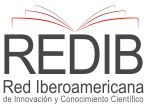Errata, corrections and retractions
-
When the journal makes an error or omission in the production of a manuscript, in this case an errata notice will be published.
-
When the error or omission lies with the author(s), a correction notice will be issued.
-
The manuscript will be corrected as appropriate.
-
An unnumbered page will be added to the end of the manuscript, which will include the 'erratum notice' or 'correction notice' signed by the Editor-in-Chief of the journal.
-
In the summary metadata, the 'errata notice' or 'correction notice' will be added at the end.
-
In the XML of the manuscript, the content of the 'errata notice' or 'correction notice' will be added at the end.
-
If there is clear evidence that the data, information and processing are unreliable in the manuscript, whether due to error or misconduct.
-
If the manuscript has previously been published in a redundant or duplicate manner.
-
If the material or data contained in the manuscript does not have authorization for use.
-
If it falls into an evident case of fraudulent authorship.
-
If the manuscript is plagiarized.
-
Whether peer review is involved and evidence is available.
-
Whether peer review is involved and evidence is available.
-
Before the title of the manuscript, the retraction will be recorded: 'Article retracted: [title of article]'.
-
A watermark indicating 'retracted article' will be added to each page of the published manuscript.
-
At the beginning of the published version of the manuscript, on a new page without pagination, a 'retraction note' signed by the Editor-in-Chief of the journal will be added.
-
In the summary metadata the 'retraction note' will be added at the end.
-
In the XML version the content of the retracted manuscript will be deleted.
-
When ordered by court order or by the competent authority.
-
When it poses a serious risk to health.
-
When necessary for reasons duly justified by the Editorial Committee.
-
Before the title of the manuscript, 'Article deleted: [title of article]' will be indicated.
-
The manuscript in its entirety will be replaced by a document stating that it has been eliminated and the reason behind it, followed by the signature of the Editor-in-Chief of the journal at the end of the document.
-
The metadata will be preserved, as well as the authorship and title of the manuscript.
-
The summary metadata will be replaced by the 'deletion notice'.






















 LIBRARY USAT
LIBRARY USAT